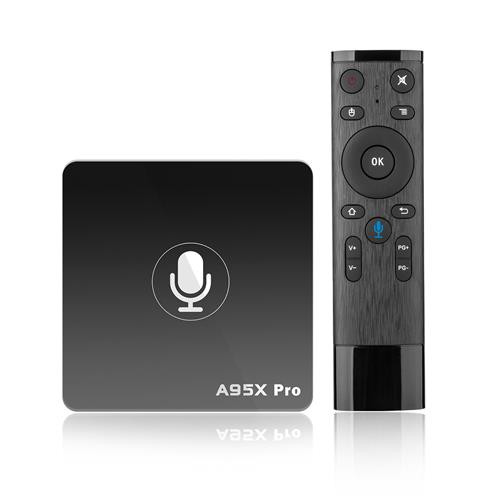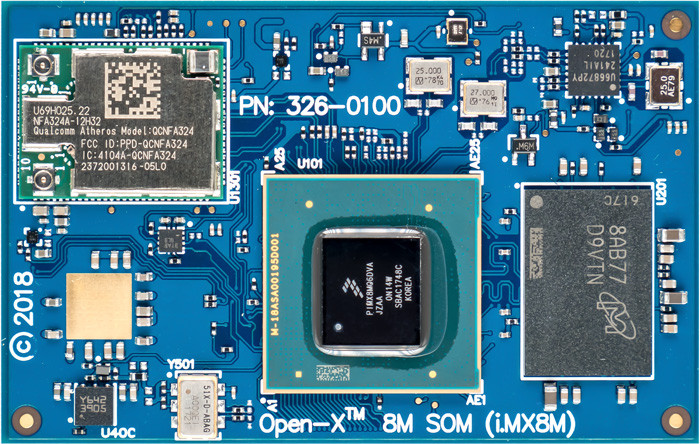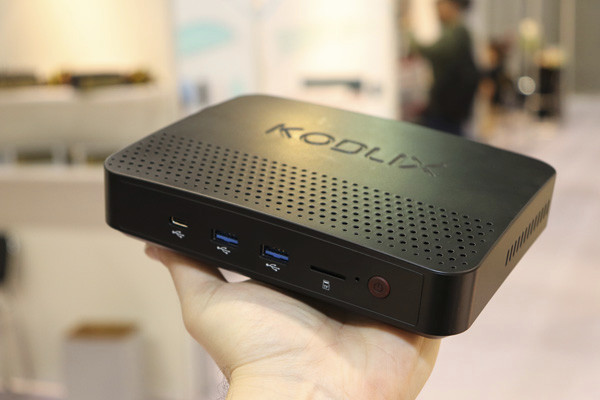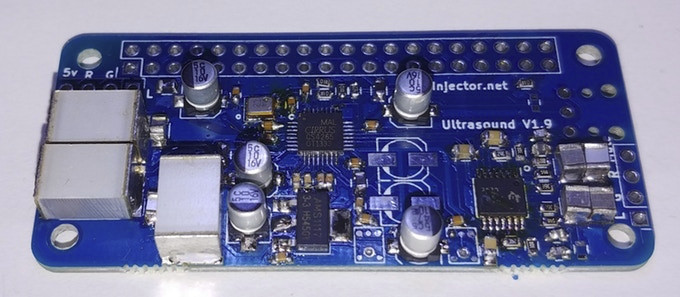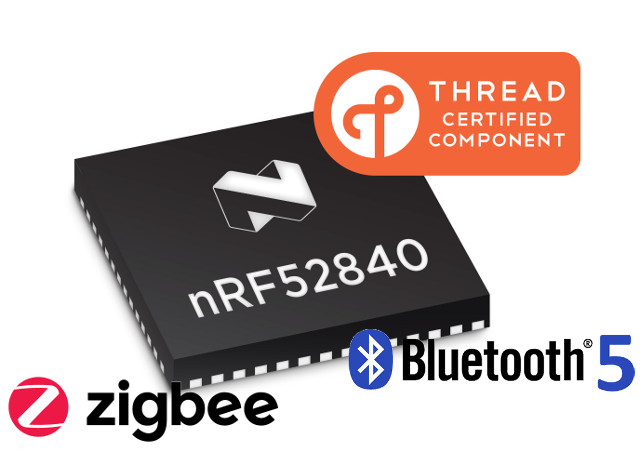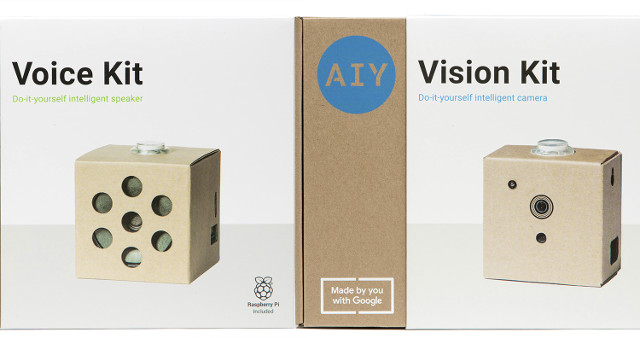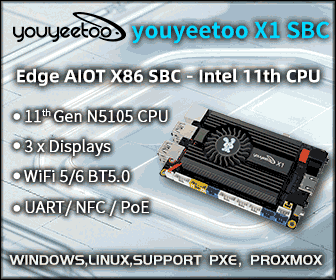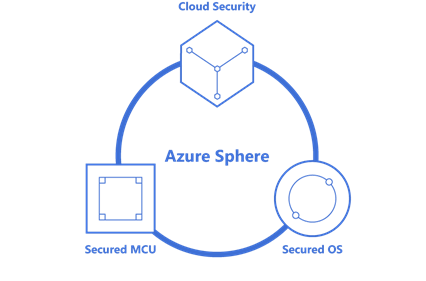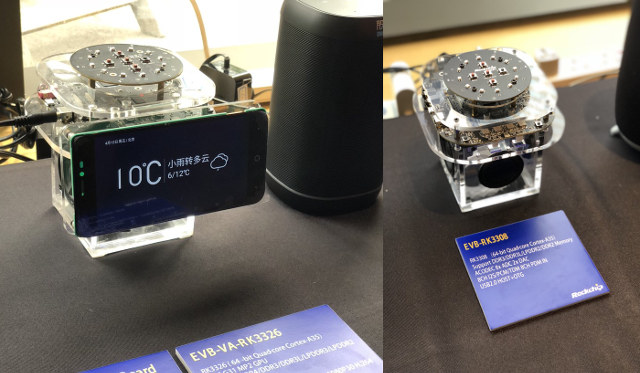TV box manufacturers should move and more more from Android to Android TV operating systems, so we can expect cheaper TV boxes offering an Android TV experience. One of those device is Nexbox A95X Pro that sells for $37.99 on GeekBuying (pre-orders shipping in about 4 days), and also happens to support Netflix HD (720p). [Update: The promo on GeekBuying appears to be over, but it’s now available on GearBest for $36.99 with coupon GBA95X1] Nexbox A95X Pro TV box specifications: SoC – Amlogic S905W quad core Arm Cortex-A53 processor with Arm Mali-450MP GPU System Memory – 2GB DDR3 Storage – 16GB eMMC flash, micro SD card slot Video Output – HDMI up to 4K @ 30 Hz, AV port (composite) Video – 4K 30 fps H.265, 4K 30 fps VP9 Profile-2, MPEG1/2/4, H.264, HD AVC/VC1, RM/RMVB, Xvid/DivX3/4/5/6, RealVideo8/9/10 Audio Output – Via HDMI and AV ports, coaxial S/PDIF port Connectivity – 10/100M Ethernet, 802.11 b/g/n WiFi […]
Intrinsyc Introduces Open-X 8M SoM and Mini-ITX Development Kit with Optional LCD Display
Intrinsyc announced their own NXP i.MX 8M system-on-module, as well as a corresponding development kit back in February 2018 for Embedded World 2018. Somehow I missed it until today when the company tweeted about the kit unboxing video, so let’s have a look, starting with the module itself.Open-X 8M SoM specifications: SoC – NXP i.MX 8M quad-core Arm Cortex-A53 processor @ up to 1.5 GHz, Arm Cortex-M4 core with 256 KB tightly coupled memory (TCM), Vivante GC7000Lite GPU System Memory – 3GB LPDDR4 RAM Storage – 16GB eMMC Flash Video – 4Kp60 HEVC/H.265 main, and main 10 decoder, 4Kp60 VP9 decoder, 4Kp30 AVC/H.264 decoder, 1080p60 MPEG-2, MPEG-4p2, VC-1, VP8, RV9, AVS, MJPEG, H.263 decoder On-module Connectivity – WiFi 802.11a/b/g/n/ac 2.4/5.0 GHz 2×2 MU-MIMO + Bluetooth 4.1 pre-certified module 3x 100 pin board to board connectors exposing: Display Interfaces HDMI 2.0a up to 4096 x 2160 at 60 Hz 4-lane MIPI […]
KODLIX Mini PC Comes with Celeron N4000/N4100 or Pentium Silver N5000 Gemini Lake Processor, Supports Up to 16GB RAM
Gemini Lake mini PC announcement keep on coming, with the latest from Plater Electronics which showcased their KODLIX Gemini Lake mini PC at the Hong Kong Electronics Fair 2018. What makes this model interesting is that beside the usual Celeron N4000/N4100 dual/quad core processor, it also offers the most powerful yet less common Pentium Silver N5000, and support for up to 16GB RAM via two SO-DIMM slots despite competitors and motherboards manufacturers claiming a maximum of 8GB on their Gemini Lake hardware, even two memory slots are available. Specifications: SoC Intel Celeron N4000 dual core processor @ 1.10/2.60 GHz with Intel UHD Graphics 600; 6W TDP Intel Celeron N4100 quad core processor @ 1.10/2.40 GHz with Intel UHD Graphics 600; 6W TDP Intel Pentium Silver N5000 quad core processor @ 1.10/2.70 GHz with Intel UHD Graphics 605; 6W TDP System Memory – 2x DDR4 or LPDDR4 SO-DIMM slots up to […]
Flatmax Studio Audio Injector Ultra Sound Card is Designed for Raspberry Pi Boards (Crowdfunding)
Flatmax Studio has launched several audio cards for Raspberry Pi boards on Kickstarter in recent years, and their latest board is called “Audio Injector Ultra Sound Card”. The board is said to give high fidelity input and output audio @ 192 kHz, is equipped with digital output (S/PDIF) and offers dual microphone capability. An extra balanced HAT – will send and receive balanced stereo input and output – is also available. Specifications: Direct Inputs – Unpopulated Analogue Connectors (stereo RCAs provided) Direct Outputs – Unpopulated Analogue Connectors (stereo RCAs provided), Digital Optical SPDIF (Optical transducer provided) Potentiometer Inputs – Unpopulated Connectors and potentiometer (stereo pot. not provided). Potentiometer Outputs – Unpopulated Connectors and potentiometer (stereo pot. not provided). Microphone – 2x high quality ultrasound (model – SPU0410LR5H) surface mount microphones populated Audio Codec – Cirrus Logic CS4265 stereo codec Sample rate – 192 kHz, 24 bit Jitter control – Low […]
Nordic Semiconductor nRF52840 Multiprotocol SoC Adds Support for Zigbee 3.0
Nordic Semiconductor nRF52840 was introduced in late 2016 as one of the first Bluetooth 5 ready SoC, and it’s the only part from Nordic that fully supports Bluetooth 5 longer range. But the chip is actually a multiprotocol SoC and beside Bluetooth, 802.15.4, Ant, Thread and 2.4 GHz proprietary are also supported. The company has now announced one more wireless protocol working on nRF52840: Zigbee 3.0. The company has released the first engineering release for Zigbee on nRF52840, but the production grade Zigbee 3.0 certified release is planed for H2 2018. The new protocol will be enabled in the S410 v6.0 SoftDevice release. Bluetooth and Zigbee can run concurrently meaning for example you could create an nRF52840 gateway to control Zigbee smart lights from a smartphone connected over Bluetooth 5. The SDK includes examples for concurrent operation of Zigbee and Bluetooth 5 for a smart light bulb and switch. The […]
Google AIY Projects Kits are Easier to Use in 2018 with Raspberry Pi Zero WH and All Accessories Included
Google launched two AIY Projects kits last year with a Voice Kit that took a Raspberry Pi 3 to create a smart speaker, and a Vision kit for hardware accelerated computer vision using a Raspberry Pi Zero W board. Google reports the kits are popular, especially for STEM education, but educators/parents had to buy the Raspberry Pi boards and micro SD cards themselves, as well as flash the firmware to the cards. So the company decided to redesign both kits to work with the Raspberry Pi Zero WH (RPi Zero W with headers), and include it inside the box with cable and pre-provisioned SD card, so kids can get started faster with experimentation with having to setup the kits. So that means we now have AIY Projects Voice Kit v2 with RPi Zero WH and micro SD card with firmware, as well as AIY Projects Vision Kit v1.1 with RPi Zero […]
Microsoft Introduces Azure Sphere OS Linux Operating System for Certified Microcontrollers (MediaTek MT3620 for now)
Last year, Microsoft announced they were working with Mediatek on Project Sopris Secure WiFi MCU, based on Mediatek MT7687 MIPS microcontroller with 7 properties enhancing security (Hardware-based Root of Trust, failure reporting etc…). The company has now unveiled a complete secure IoT solution with Azure Sphere comprised of three main components: Azure Sphere certified secured MCUs which combine real-time and application cores with built-in Microsoft security technology and connectivity. The first compatible MCU will be Mediatek MT3620, which differs from MIPS based Project Sopris, as it features one Cortex A7 and two Cortex M4 cores as well as WiFi connectivity. Azure Sphere OS that provides four layers on top of the hardware: security monitor, custom Linux kernel, on-chip connectivity services to Azure Sphere Security Service, and app containers for computer (A7 core) or/and real-time I/Os (M4 cores). Azure Sphere Security Service, a secure cloud service for Azure Sphere device that […]
Rockchip Reveals RK3308 & RK3326 Evaluation Boards for Smart Speakers and Smart Displays
Rockchip introduced RK3308 & Gemini quad core Cortex-A35 processors for smart AI solutions last month, and now the company has shared one more tweet about evaluation boards based on RK3308 and RK3329 (Gemini) processors for respectively smart speakers and smart displays. EVB-VA-RK3326 is a smart display evaluation platform powered by Rockchip RK3326 processor with four Cortex A35 core and a Mali-G31 MP2 GPU. It comes with a main board, a microphone array, some speaker, and a display. EVB-RK3308 looks very similar with instead feature a main board powered by RK3308 quad core Cortex A35 processor which supports DDR3/DDR3L/LPDDR2/DDR2 memory, and comes with an audio codec with 8x ADC/2x DAC, support for 8-channel I2S/TDM, and USB 2.0 host + OTG interface(s). That’s the only information we have since the company has not published any details on their website. If you represent a company and are interested in developing products based on […]

